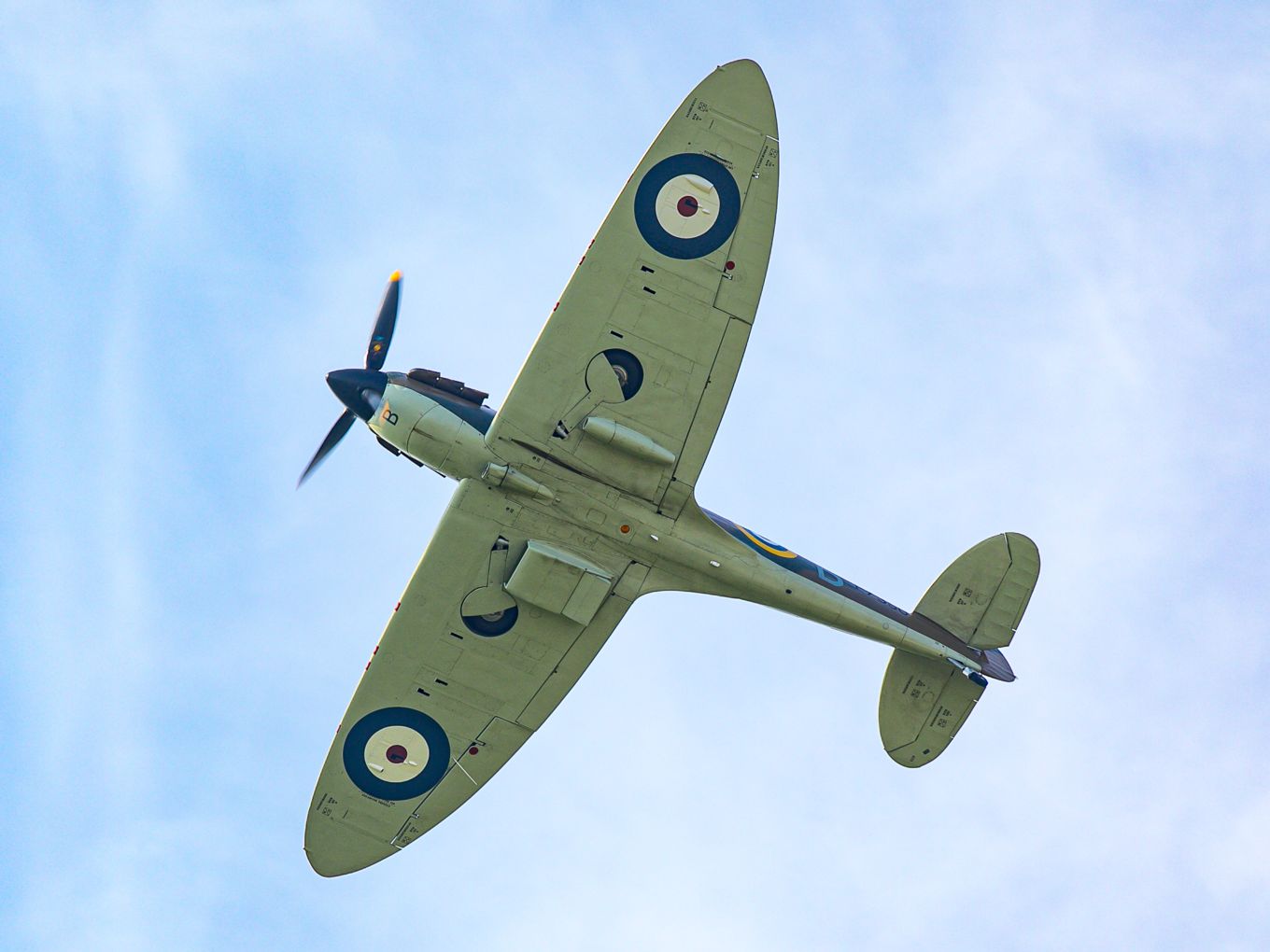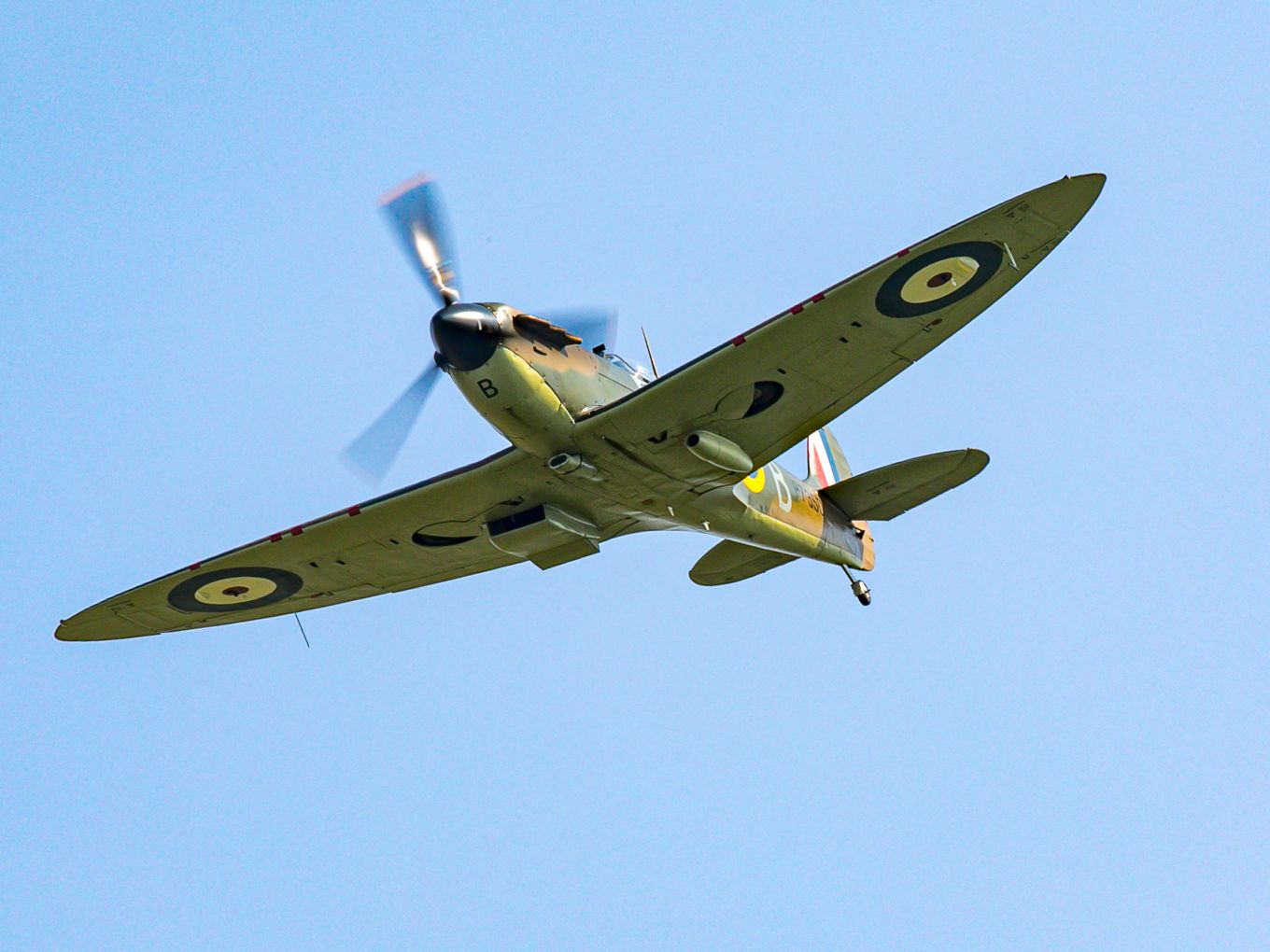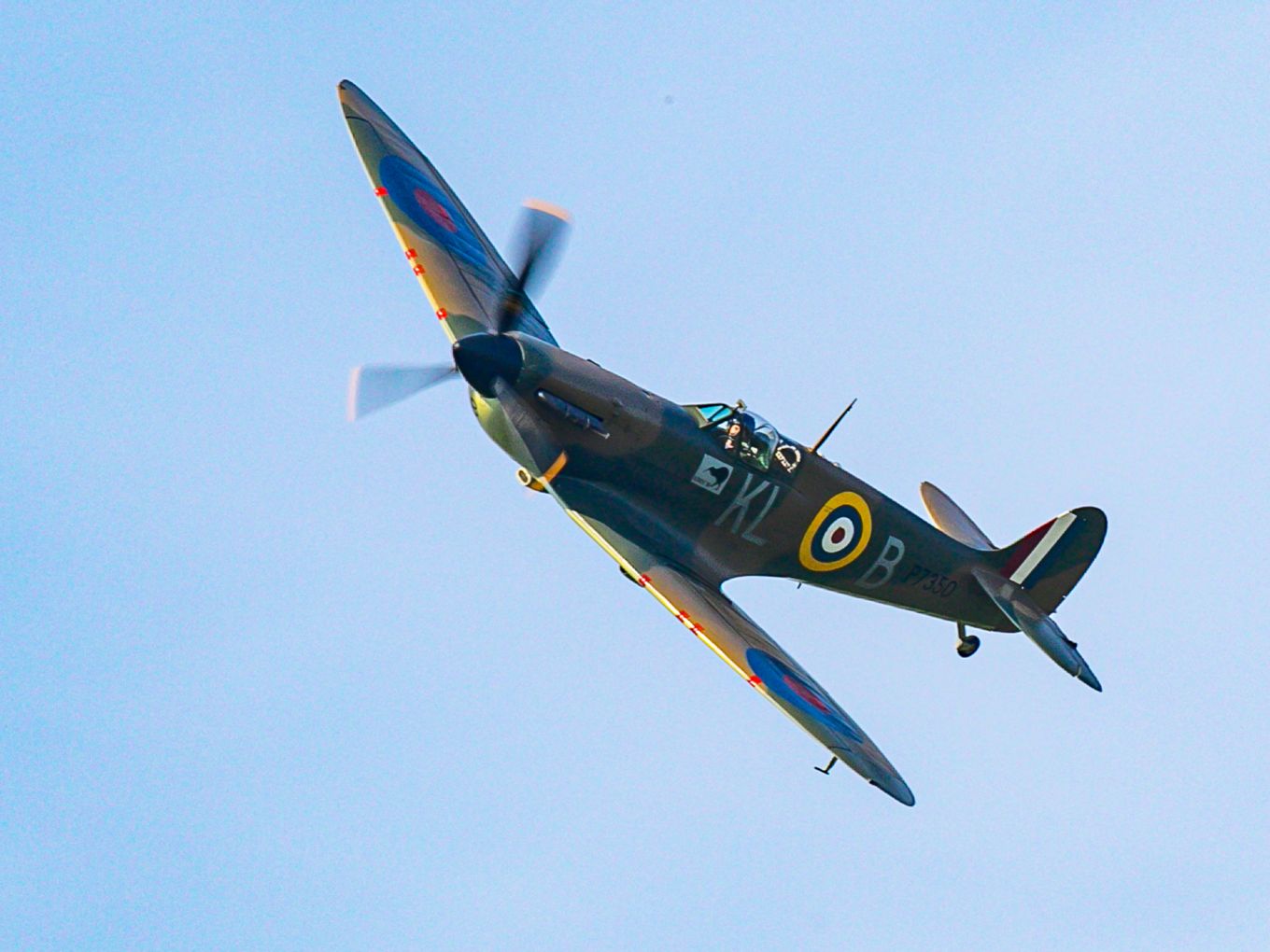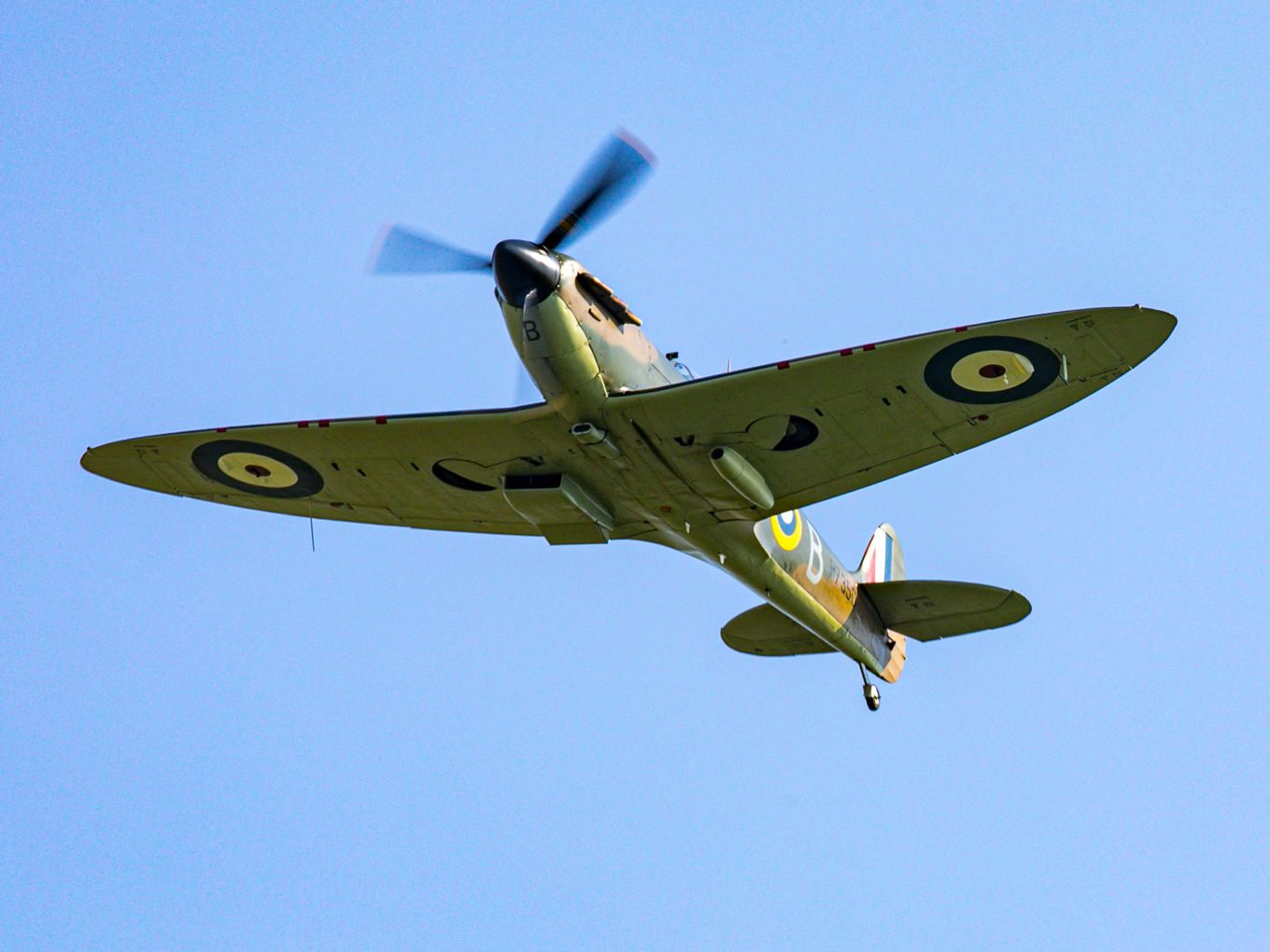
Marking the 80th anniversary of the Battle of Britain, on the morning of the 15th September 2020 the skies above RAF Digby were once again graced with the unmistakable roar of a Spitfire as they had been during the Summer of 1940.
The Battle of Britain Memorial Flight Spitfire Mk IIa P7350 is the last remaining Spitfire still flying today which fought in the Battle of Britain and provided a fitting tribute to ‘The Few’ and ‘The Many’ who supported them in 1940. Making several passes over the Lincolnshire unit, regular and reservist personnel from all 3 services, civil servants, contractors and pupils from the Tedder Primary School alike took a few moments out of their day to remember those who sacrificed so much to defend the Nation.
As the oldest RAF station, opening on 28 March 1918, RAF Digby has a very rich and notable heritage. In the 1920s and 30s it was home to Nos. 2 and 3 Flying Training Schools with Frank Whittle, Guy Gibson and Douglas Bader all stationed at Digby at one point or another. The Station underwent a major refurbishment in 1935-36 and in 1937 it became a Fighter Command Station under Air Vice-Marshal Sir Hugh Dowding.

During the Battle of Britain, RAF Digby was part of 12 Group, RAF Fighter Command, tasked with defending the Midlands. By July 1940 the Fighter Command Groups were broken down into sectors with each Sector Station becoming a key node in the world’s first Integrated Air Defence System. Digby controlled Lima Sector with its operations room responsible for defending the country from the northern part of The Wash across to Shrewsbury and from Wrexham across to the East Coast. Digby had satellite airfields at RAF Wellingore and RAF Coleby Grange operating Blenheims, Hurricanes, Spitfires and Beaufighters. The Station subsequently became home to a Royal Canadian Air Force (RCAF) Wing and 2021 will see the 80th Anniversary of the special links with Canada. Pilot Officer John Magee RCAF who wrote the famous aviation poem ‘High Flight’ was killed whilst based at Digby in 1941 and is buried in the local cemetery in Scopwick.

With over 100 years of operational service, RAF Digby has seen 62 Station Commanders that included such famous RAF commanders as Air Chief Marshal Sir Arthur ‘Bomber’ Harris, Commander-in-Chief Bomber Command; Marshal of the Royal Air Force Lord Tedder Deputy Supreme Commander to General Eisenhower for the 1944 D-Day landings and Air Chief Marshal Sir Trafford Leigh-Mallory, who commanded 12 Group during the Battle of Britain. The 7th September 2020 marked another milestone as Wing Commander Damien Todd took over as RAF Digby’s newest and 63rd Station Commander from Wing Commander Richard Paine.
“It is a privilege to command. To command a Unit with the rich heritage of RAF Digby and to take over whilst commemorating the part that our forebears here at Digby played in protecting the Nation is doubly humbling. We now face different threats to those of 1940 but I have no doubt that the whole force team at Digby will rise to the 21st century challenges we face.”
Wing Commander Damien Todd
Station Commander RAF Digby
Today RAF Digby is a tri-service unit and part of UK StratCom that directly supports operations 24 hours a day, 7 days a week. It is home to the Headquarters Joint Cyber and Electromagnetic Activities Group (JCG), Joint Service Signals Unit (Digby) as well as several key lodger units including 591 Signals Unit, the Aerial Erector School and the HQ Trent Wing of the Air Training Corps.





